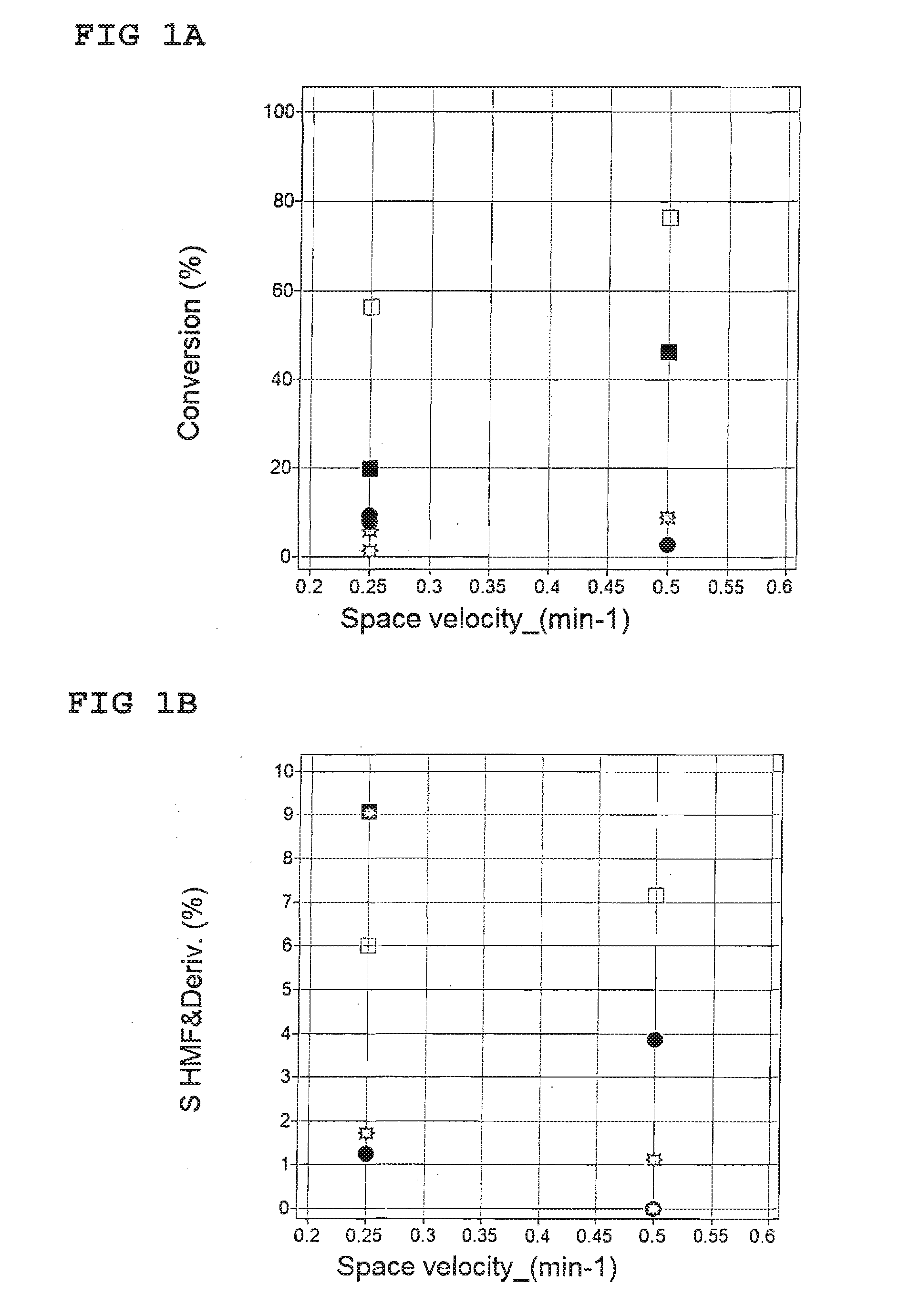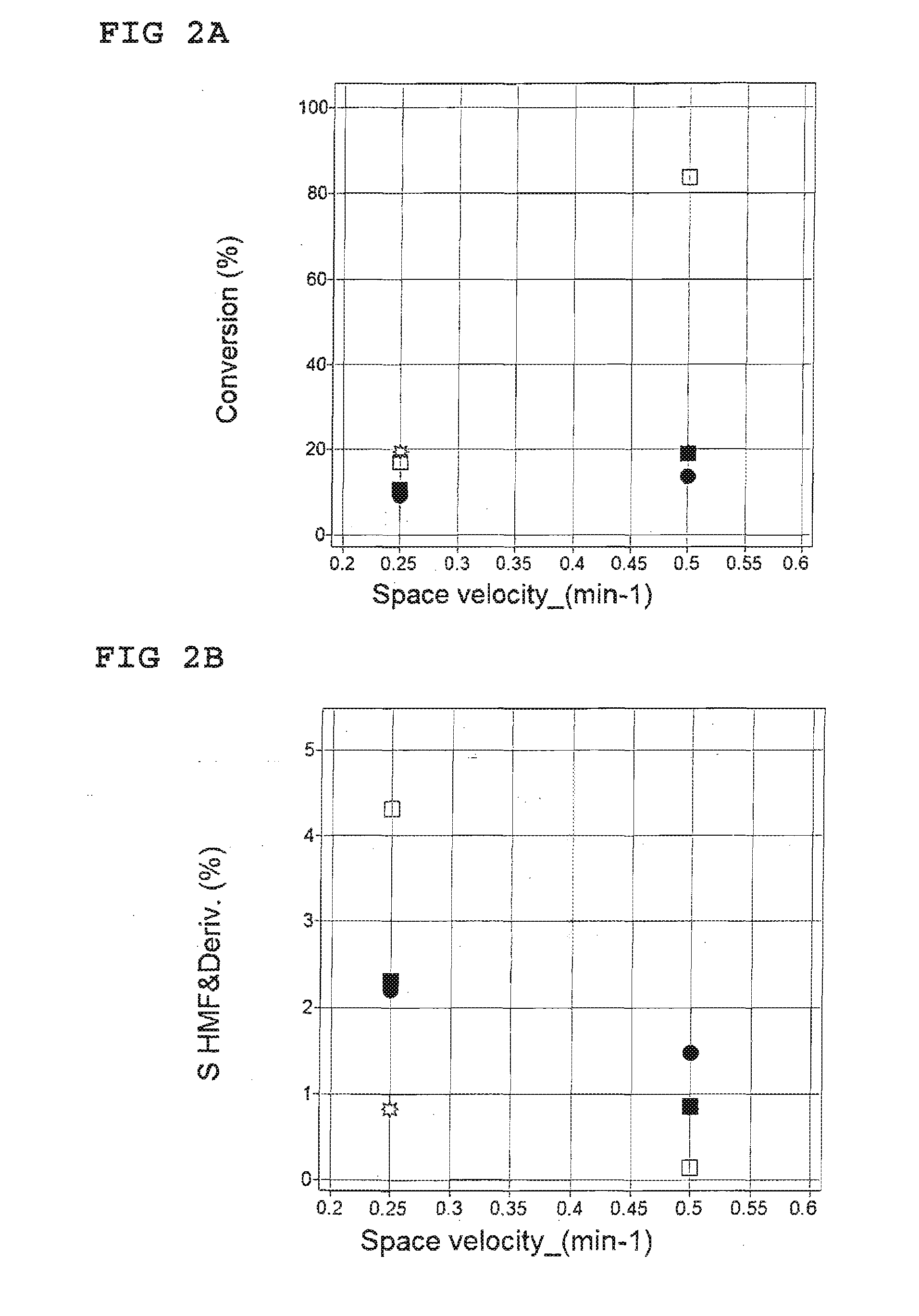Method for the synthesis of 5-hydroxymethylfurfural ethers and their use
a technology of methylfurfurfur and ether, which is applied in the direction of sustainable manufacturing/processing, fuels, organic chemistry, etc., can solve the problems of low price and abundant availability of sucrose and glucose, undesirable effects of fructose as feed, and no process for synthesis of hmf on an industrial scal
- Summary
- Abstract
- Description
- Claims
- Application Information
AI Technical Summary
Benefits of technology
Problems solved by technology
Method used
Image
Examples
examples
Apparatus
[0035]Continuous parallel flow reactor system consisting of four quartz reactors inserted in a silver heating block; temperature and flow regulators and three HPLC pumps. Two of the pumps deliver the liquid to the reactors and third one is employed to dilute the reaction products prior to collection.
[0036]Analytical Method
[0037]The reaction products were quantified with the aid of HPLC-analysis with an internal standard (saccharine, Sigma Aldrich). A Merck-Hitachi L7000 chromatograph, equipped UV and RI detectors, was used. Stationary phase were reverse phase C18 (Sunfire 3.5 m, 4.6×100 mm, Waters) and cation exchange (SupelcogelH, 4.6×300 mm, SigmaAldrich) columns connected in series. A gradient elution at a constant flow 0.6 ml / min and temperature 60° C. was used according to the following scheme.
Time (min)0.2% TFA (aq)MethanolAcetonitrile090.07.03.01090.07.03.01180.00.020.01580.00.020.01690.07.03.02190.07.03.0
[0038]General Procedure
[0039]A 1.25 wt % solution of glucose (...
PUM
| Property | Measurement | Unit |
|---|---|---|
| temperature | aaaaa | aaaaa |
| temperature | aaaaa | aaaaa |
| temperature | aaaaa | aaaaa |
Abstract
Description
Claims
Application Information
 Login to View More
Login to View More - R&D
- Intellectual Property
- Life Sciences
- Materials
- Tech Scout
- Unparalleled Data Quality
- Higher Quality Content
- 60% Fewer Hallucinations
Browse by: Latest US Patents, China's latest patents, Technical Efficacy Thesaurus, Application Domain, Technology Topic, Popular Technical Reports.
© 2025 PatSnap. All rights reserved.Legal|Privacy policy|Modern Slavery Act Transparency Statement|Sitemap|About US| Contact US: help@patsnap.com


